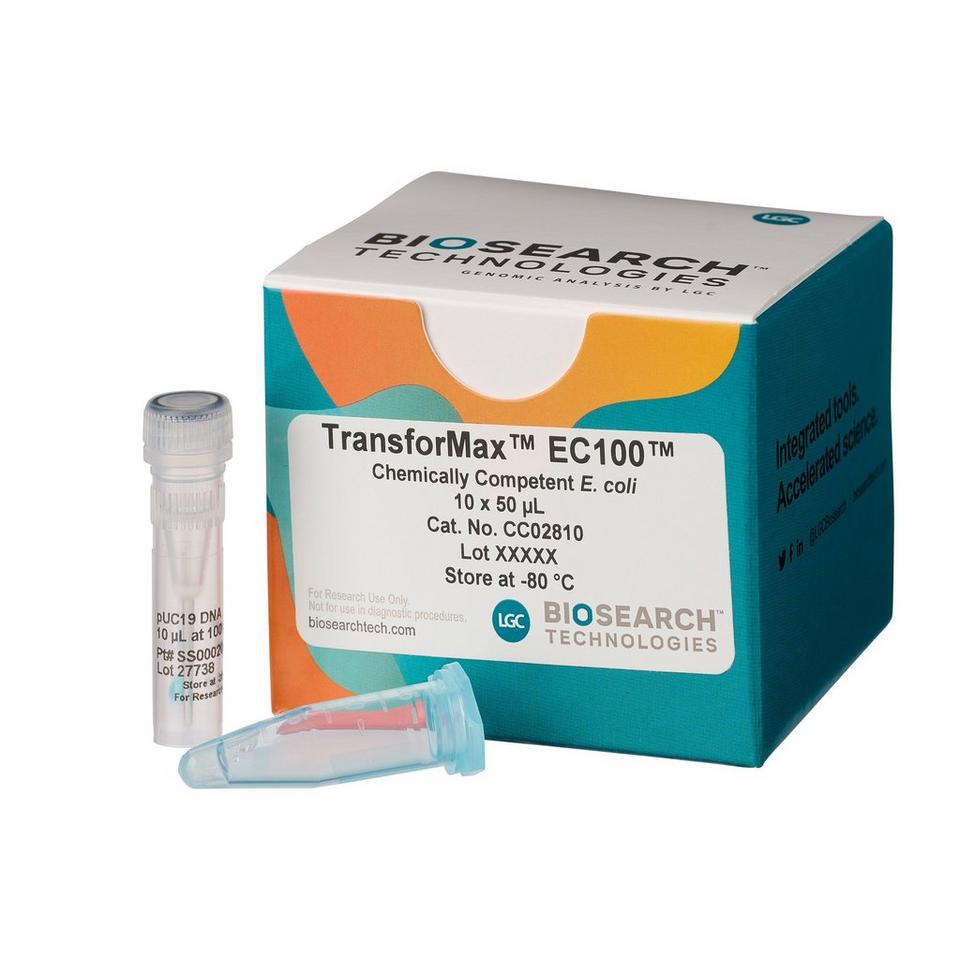The highly versatile TransforMax™ EC100™ E. coli competent cells are ideal for most cloning applications. The cells provide very high transformation efficiency when tested against a wide range of supercoiled DNAs as well as DNA directly from a ligation reaction (Table 1).

| pUC19 |
1.4 x 108 |
1.4 x 1010 |
| 8.1-kb Clone |
1.3 x 107 |
Not tested |
| 13.1-kb Clone |
4.3 x 106 |
1.3 x 109 |
| 23.1-kb Clone |
9.2 x 105 |
3.0 x 108 |
| 145-kb BAC Clone |
Not tested |
7 x 107 |
| 13.1-kb clone directly from a ligation reaction |
2.2 x 105 |
2.1 x 107 |
Table 1. Comparison of the transformation efficiencies of TransforMax™ EC100™ E. coli with a variety of DNAs. Transformations were performed using 50 µl of competent cells and either supercoiled DNAs of the indicated sizes or a 1-µl aliquot from a standard 10-µl ligation reaction. Results shown are in cfu/µg of DNA and are the average transformation efficiencies obtained from several trials.
Genotype
F- mcrA Δ(mrr-hsdRMS-mcrBC) Φ80dlacZΔM15 ΔlacX74 recA1 endA1 araD139 Δ(ara, leu)7697 galU galK λ- rpsL (StrR) nupG
TransforMax EC100 Electrocompetent E. coli
- Transformation efficiency of >1 x 1010 cfu/µg of pUC19.
TransforMax EC100 Chemically Competent E. coli
- Transformation efficiency of >5 x 108 cfu/µg of pUC19.
If you cannot find the answer to your problem then please contact us or telephone +44 (0)1954 210 200